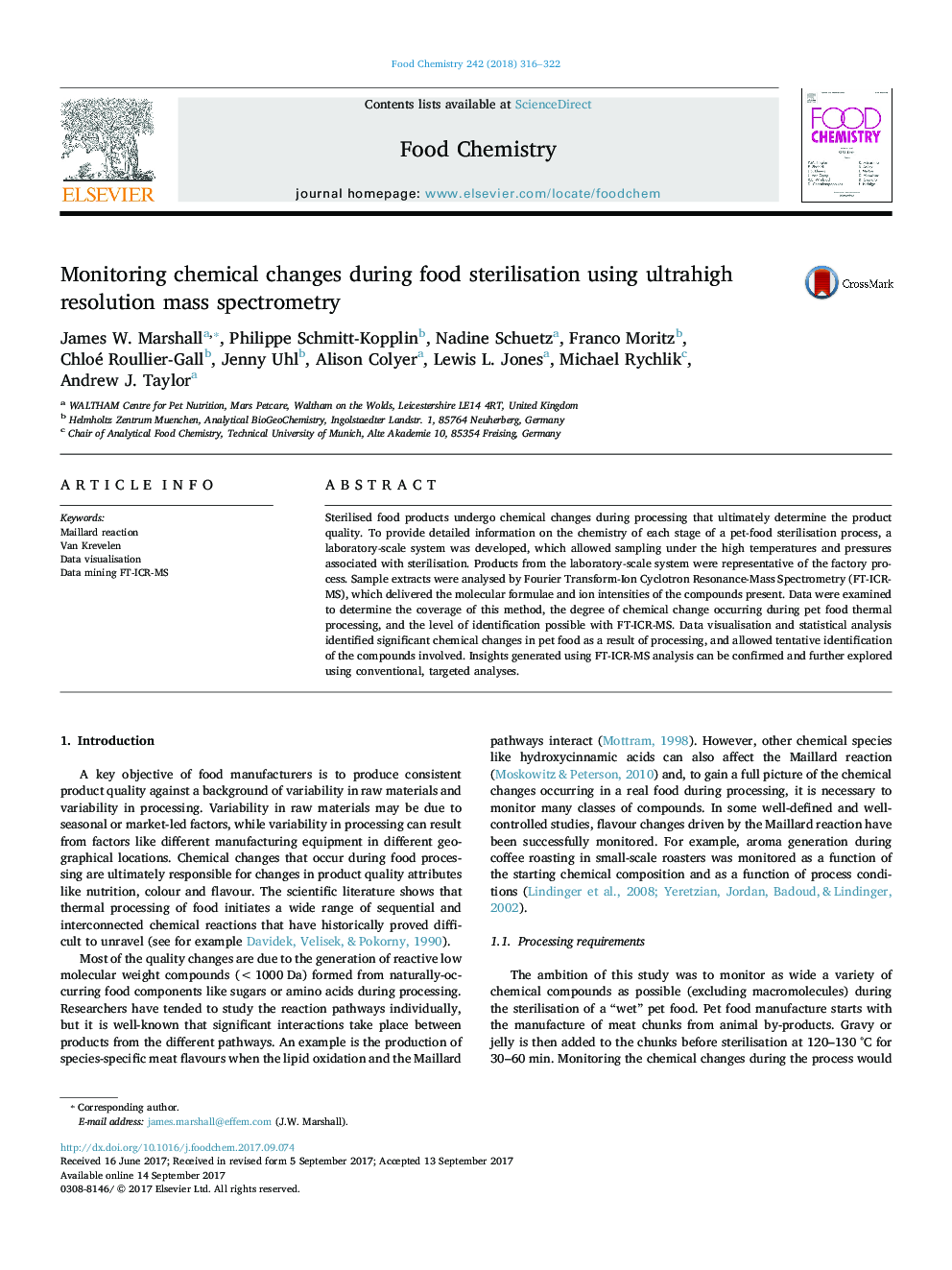| کد مقاله | کد نشریه | سال انتشار | مقاله انگلیسی | نسخه تمام متن |
|---|---|---|---|---|
| 5132612 | 1492050 | 2018 | 7 صفحه PDF | دانلود رایگان |
- Laboratory-scale system allowed monitoring of chemical changes during sterilisation.
- The lab-scale process was representative of the factory pet food process.
- FT-ICR-MS indicated around 2000 molecular formulae were present in each sample.
- Data visualisation allowed tentative identification of some compounds.
- The first stages of reaction between amino acids and sugars were monitored.
Sterilised food products undergo chemical changes during processing that ultimately determine the product quality. To provide detailed information on the chemistry of each stage of a pet-food sterilisation process, a laboratory-scale system was developed, which allowed sampling under the high temperatures and pressures associated with sterilisation. Products from the laboratory-scale system were representative of the factory process. Sample extracts were analysed by Fourier Transform-Ion Cyclotron Resonance-Mass Spectrometry (FT-ICR-MS), which delivered the molecular formulae and ion intensities of the compounds present. Data were examined to determine the coverage of this method, the degree of chemical change occurring during pet food thermal processing, and the level of identification possible with FT-ICR-MS. Data visualisation and statistical analysis identified significant chemical changes in pet food as a result of processing, and allowed tentative identification of the compounds involved. Insights generated using FT-ICR-MS analysis can be confirmed and further explored using conventional, targeted analyses.
Journal: Food Chemistry - Volume 242, 1 March 2018, Pages 316-322
